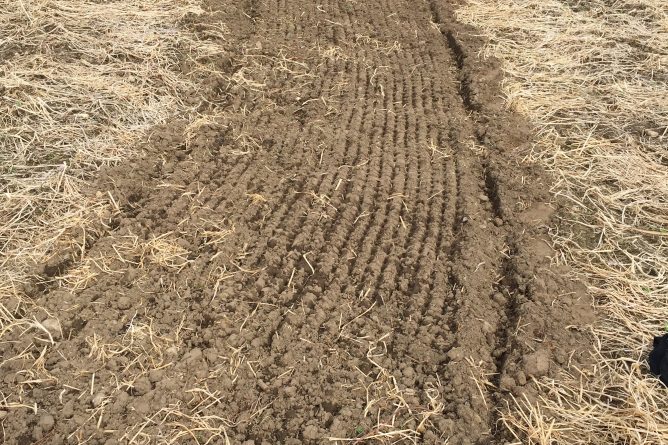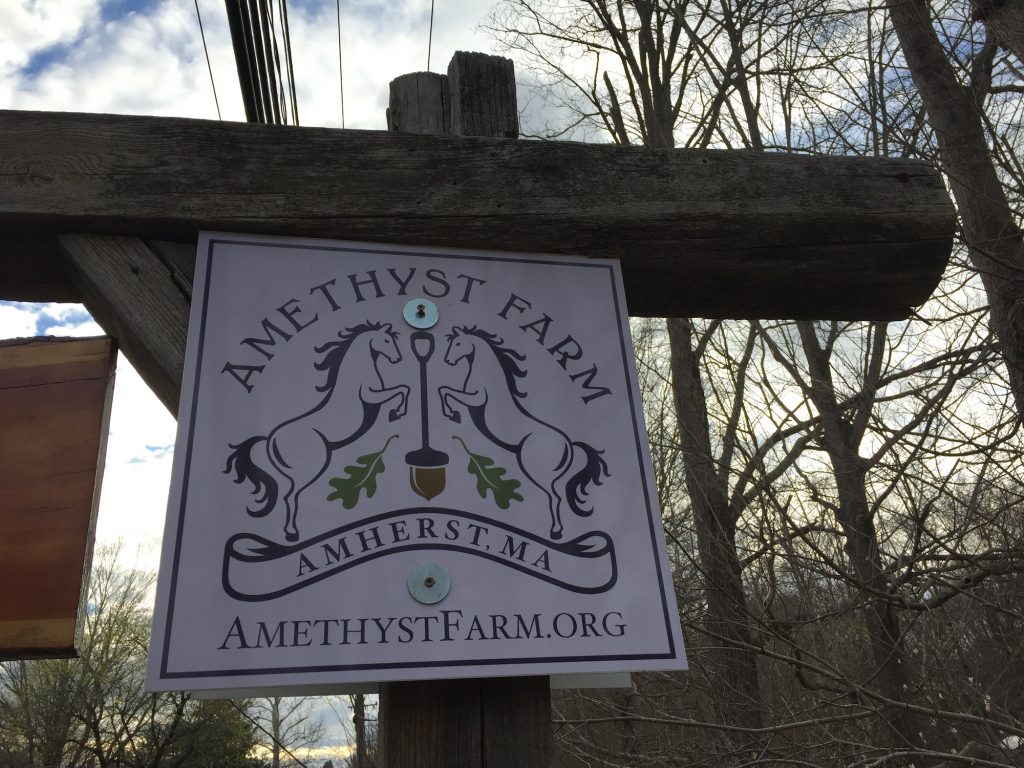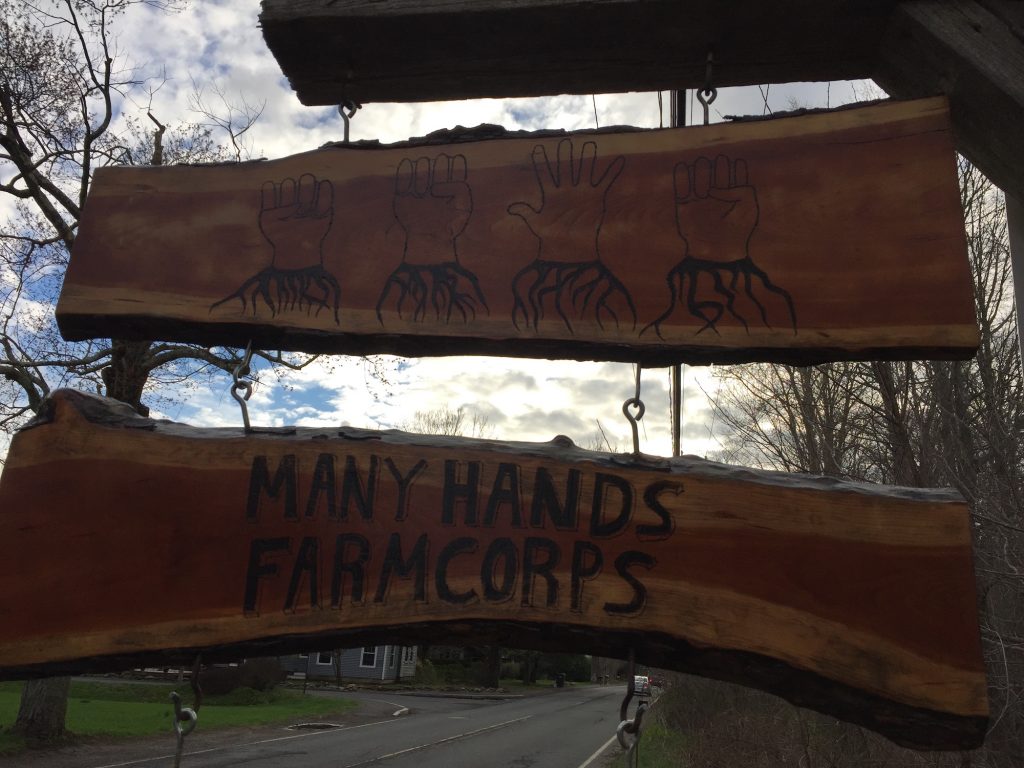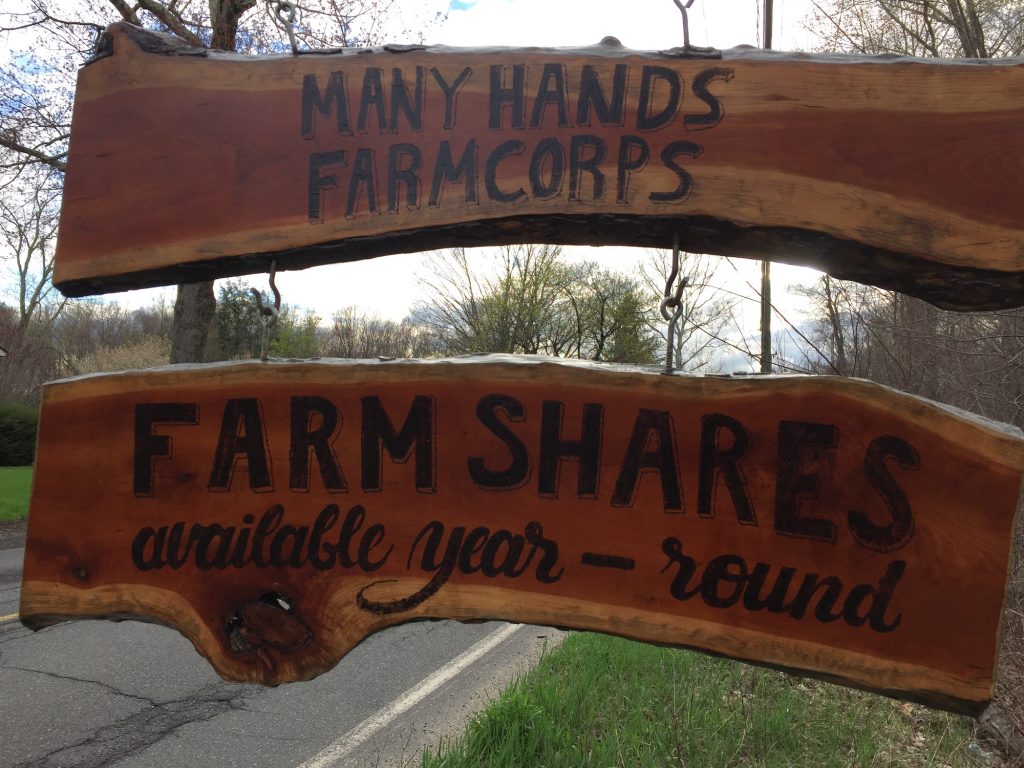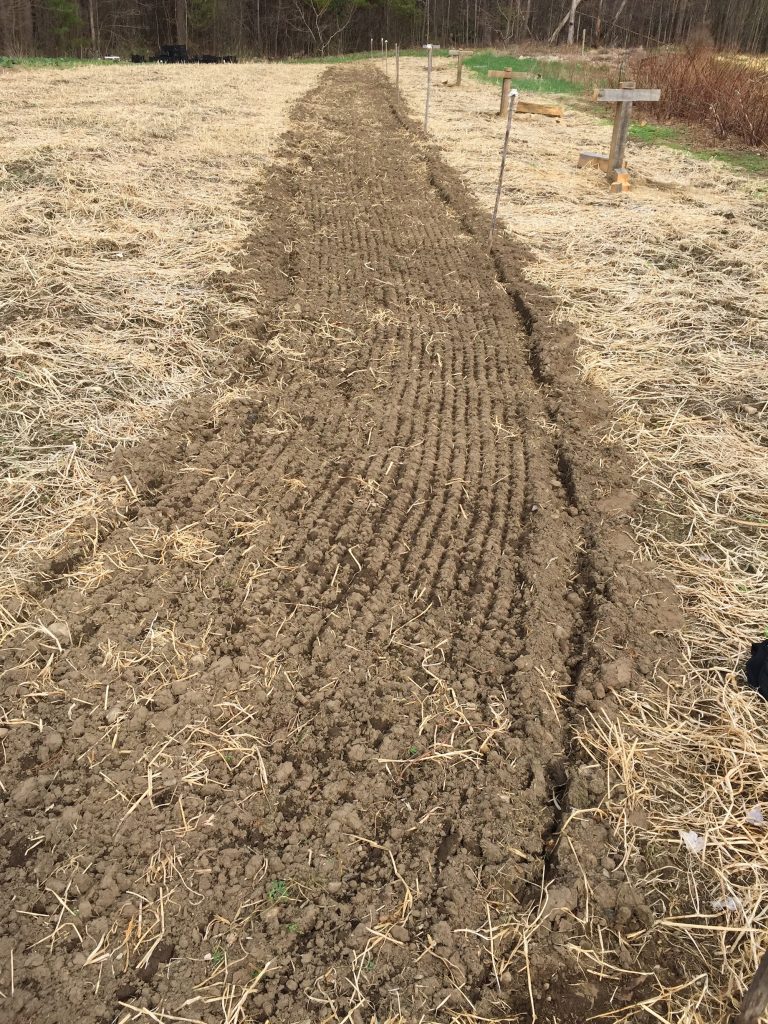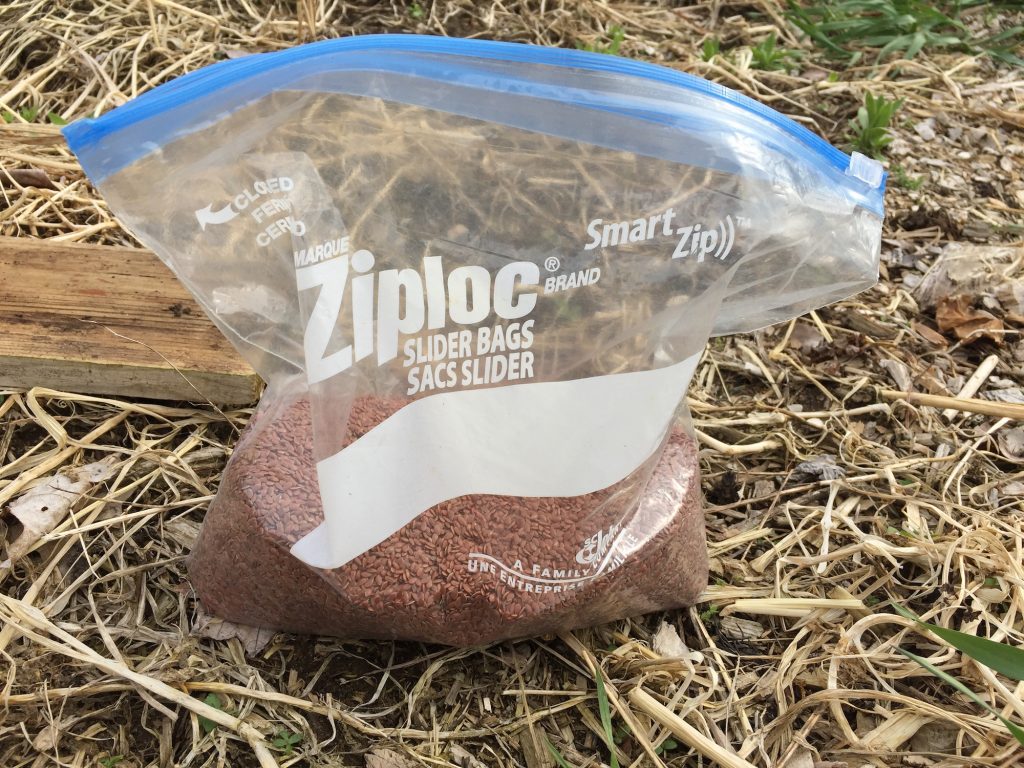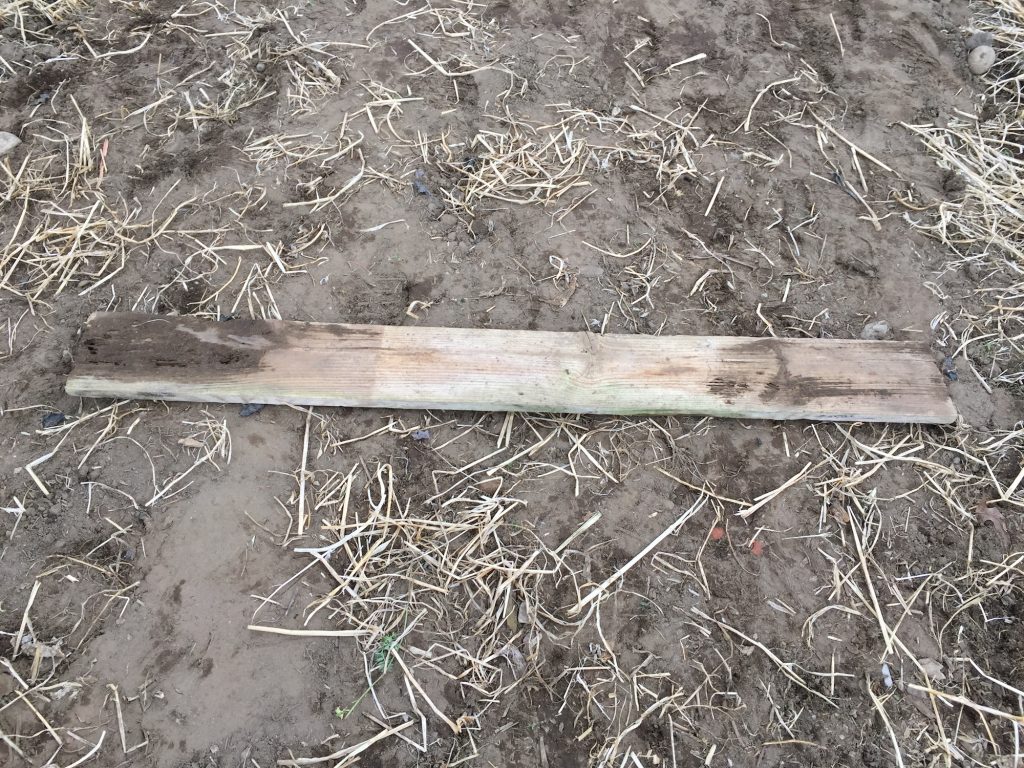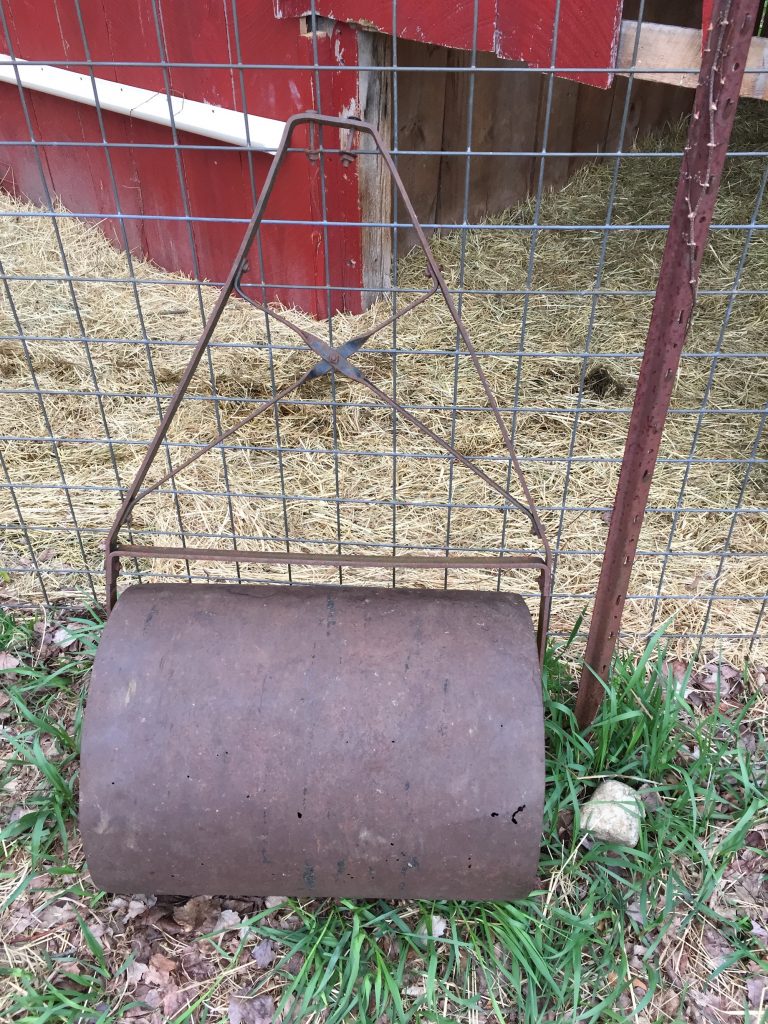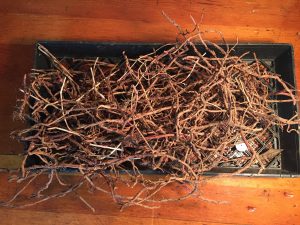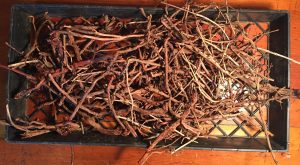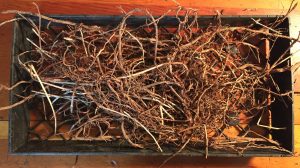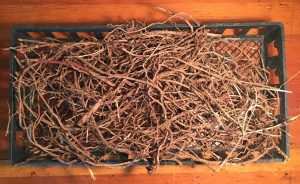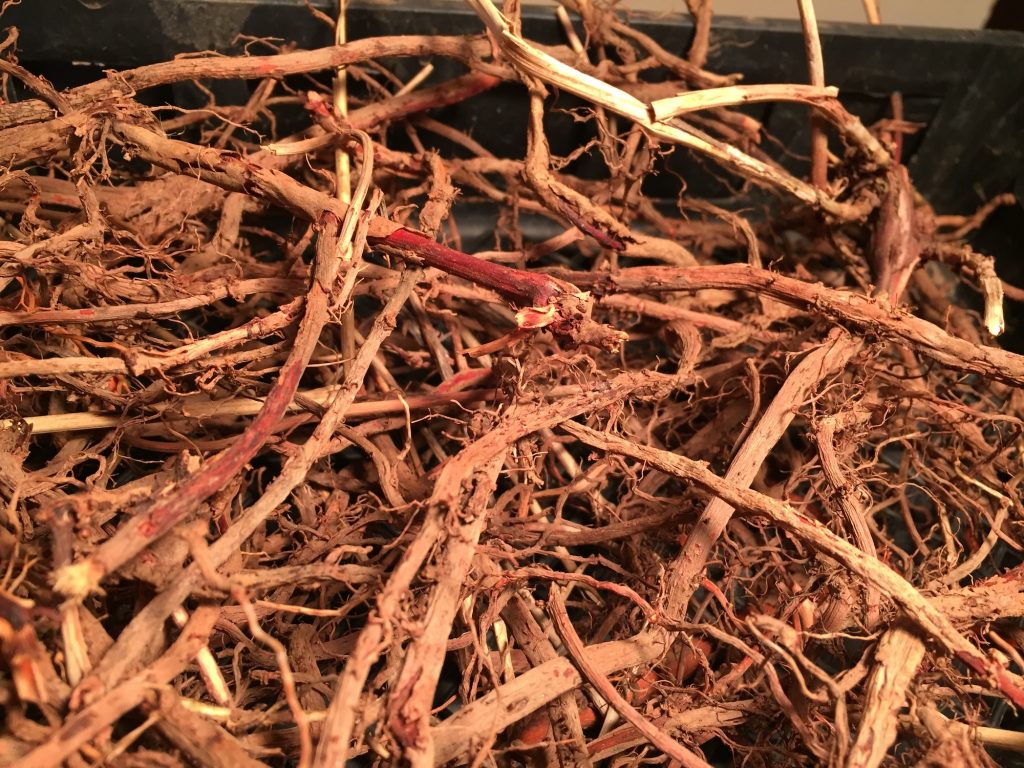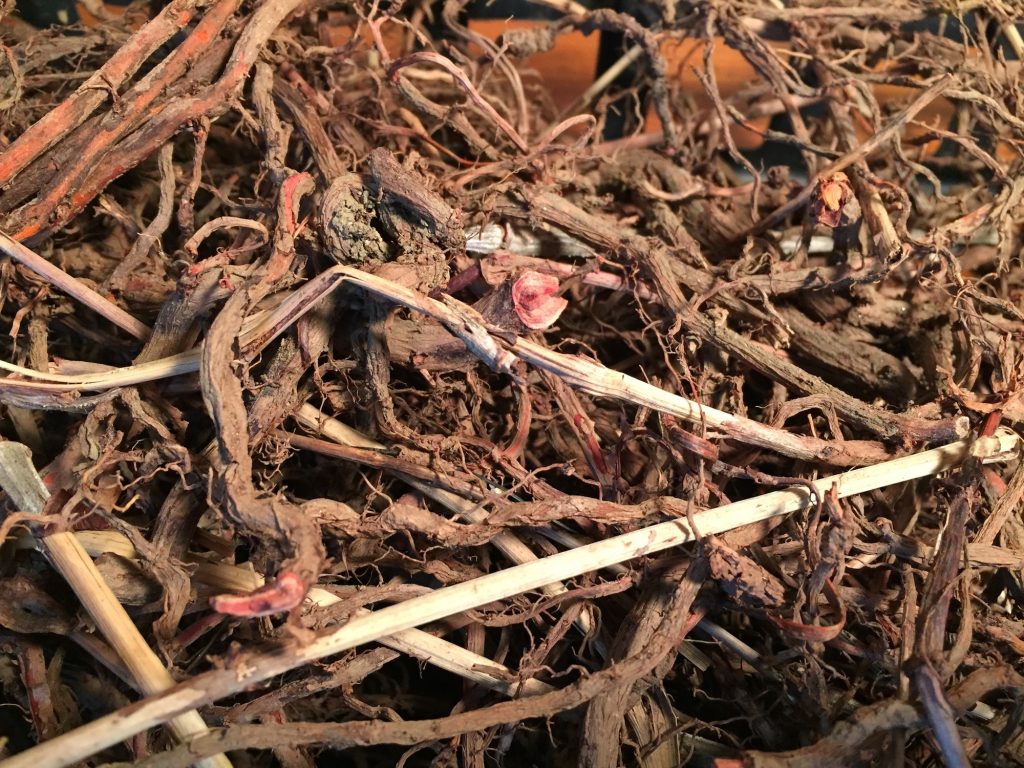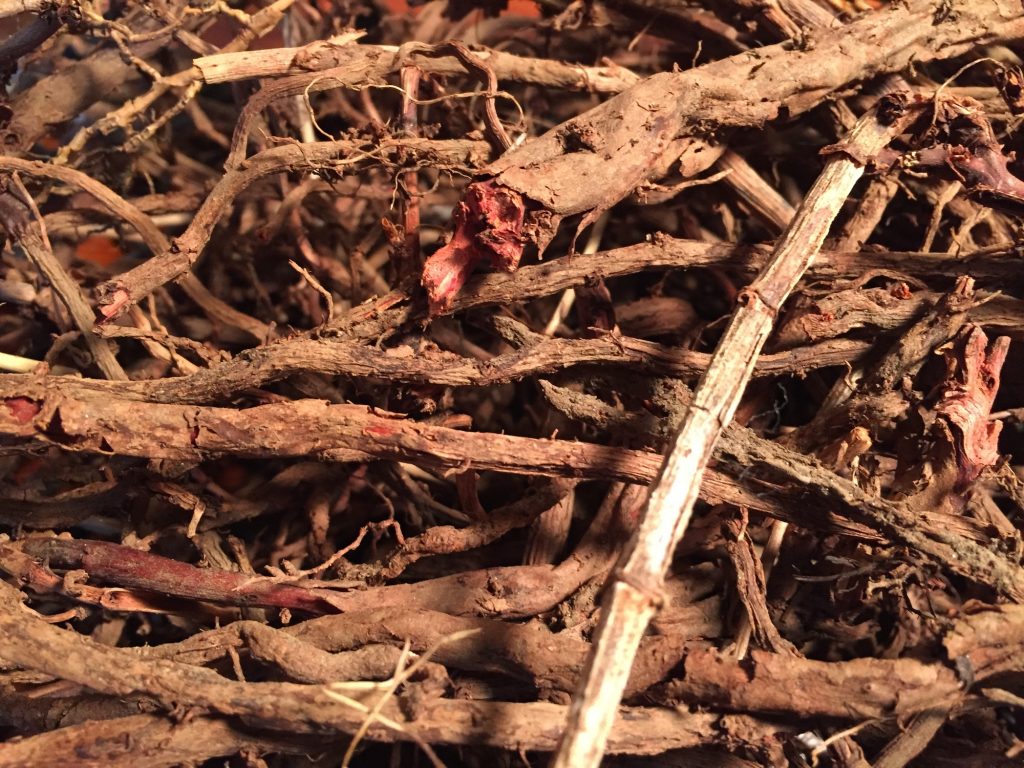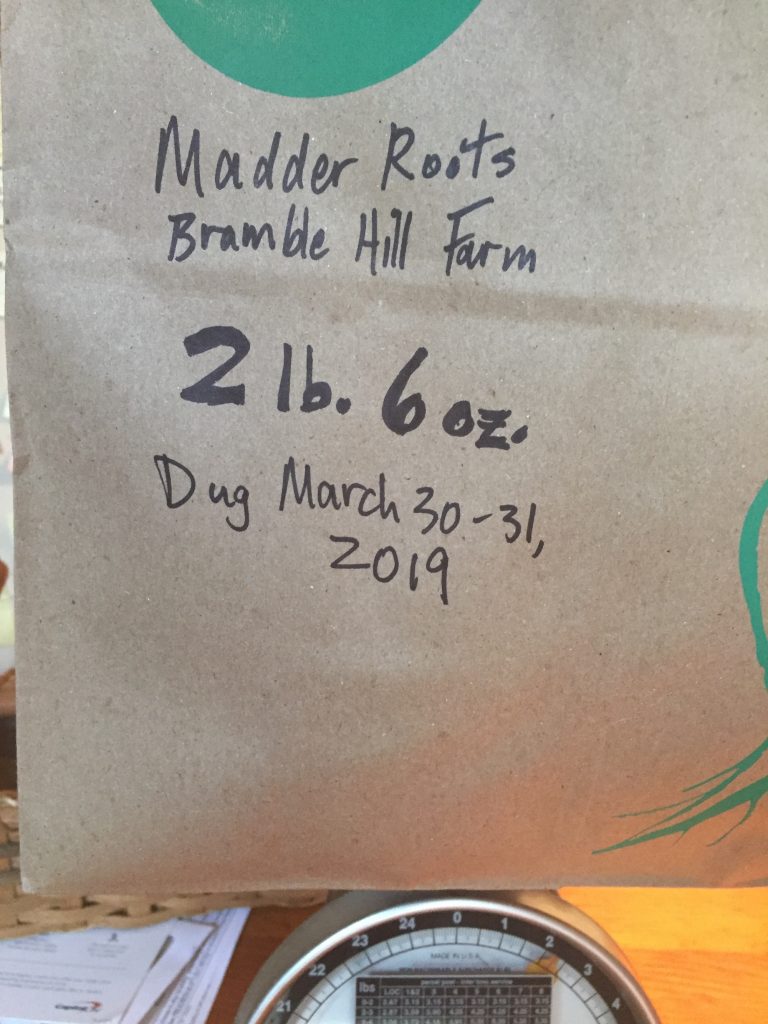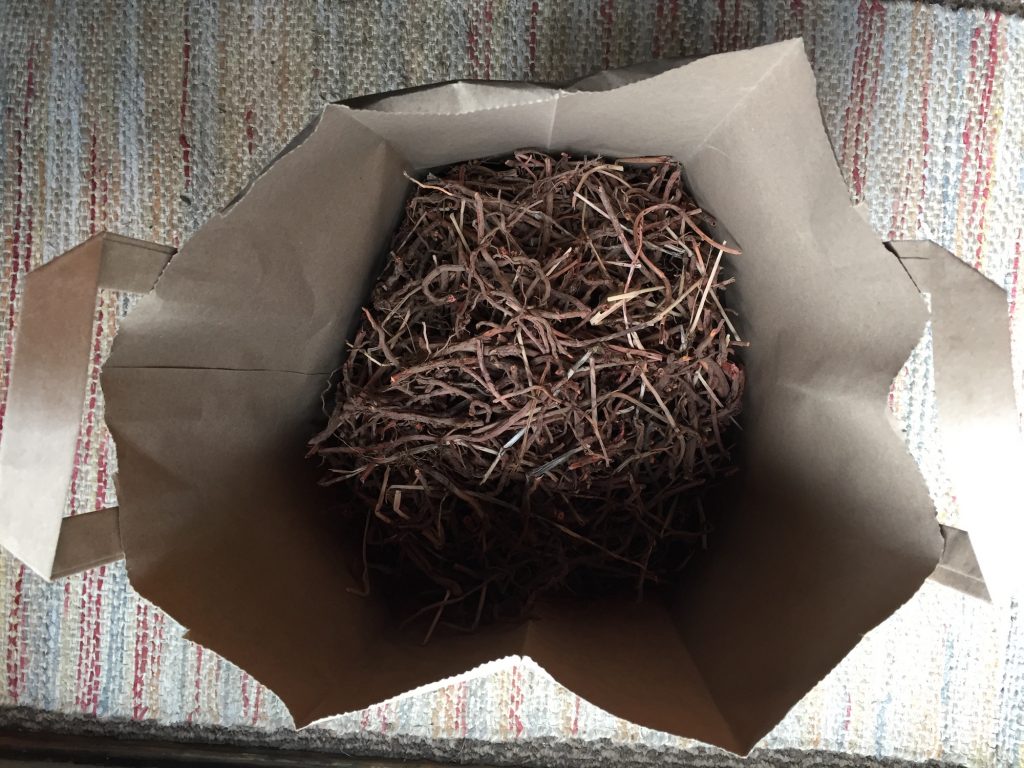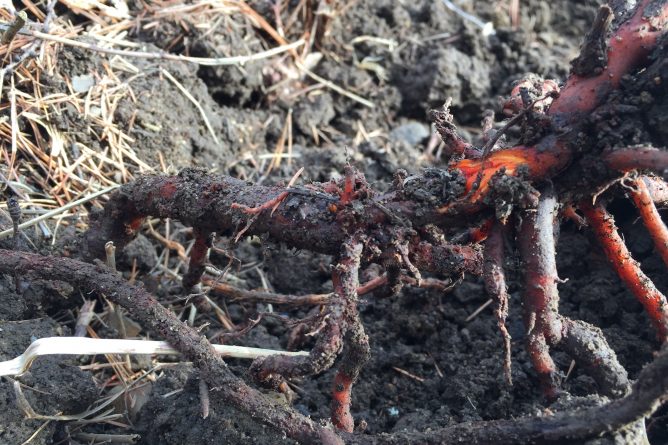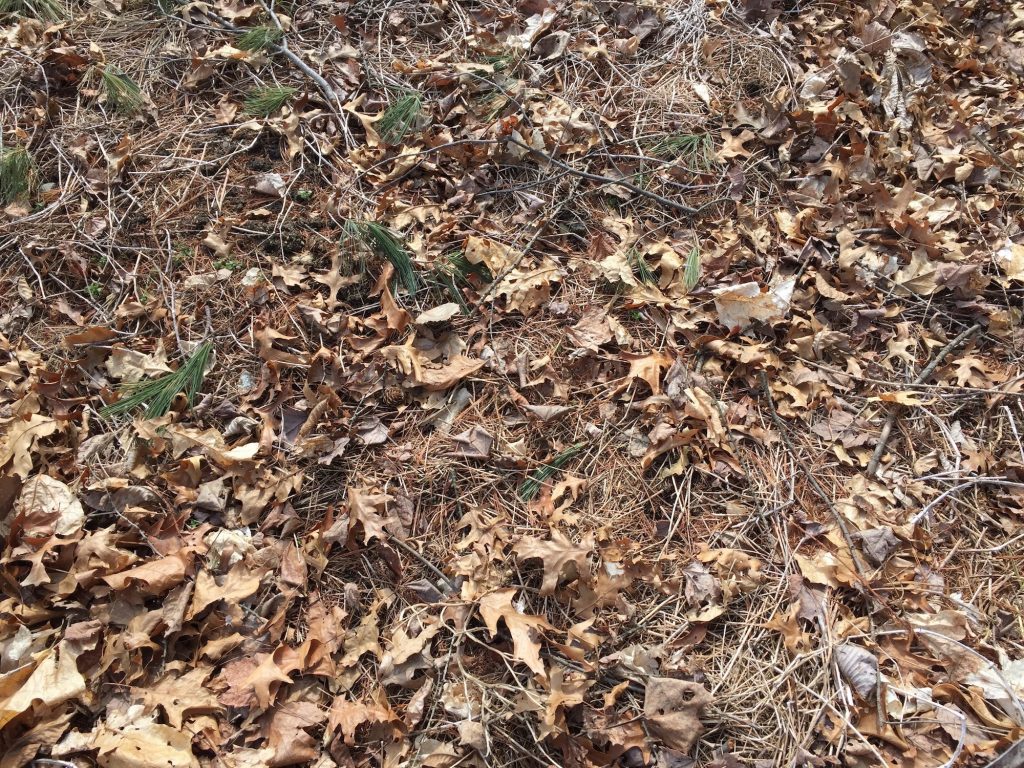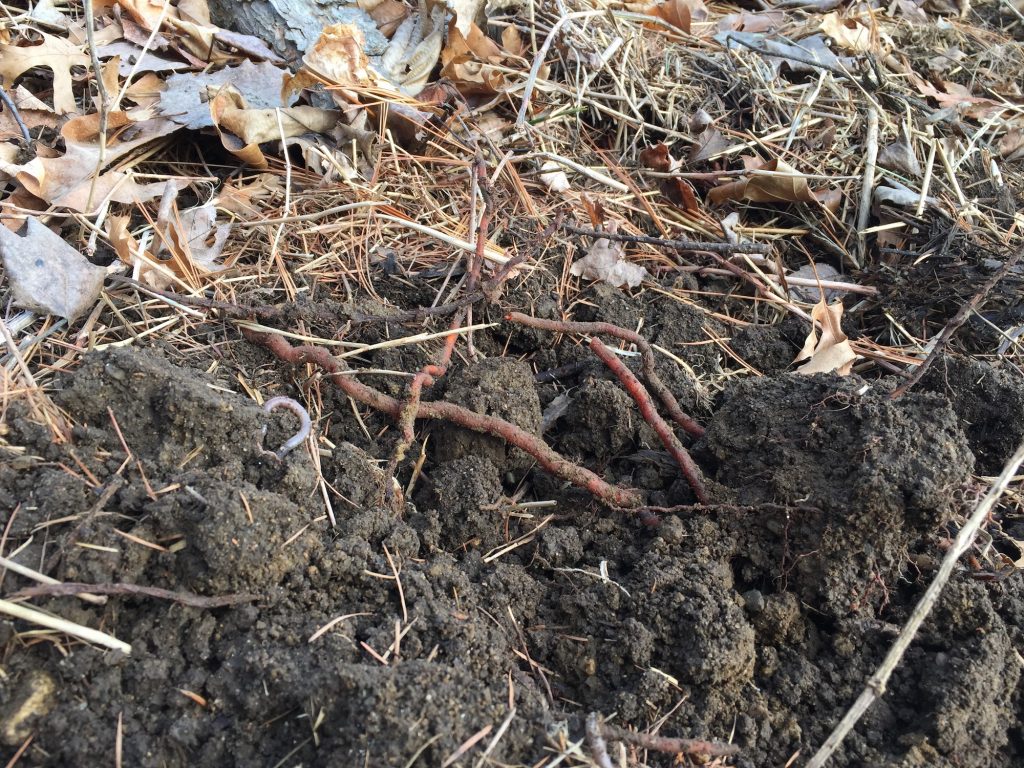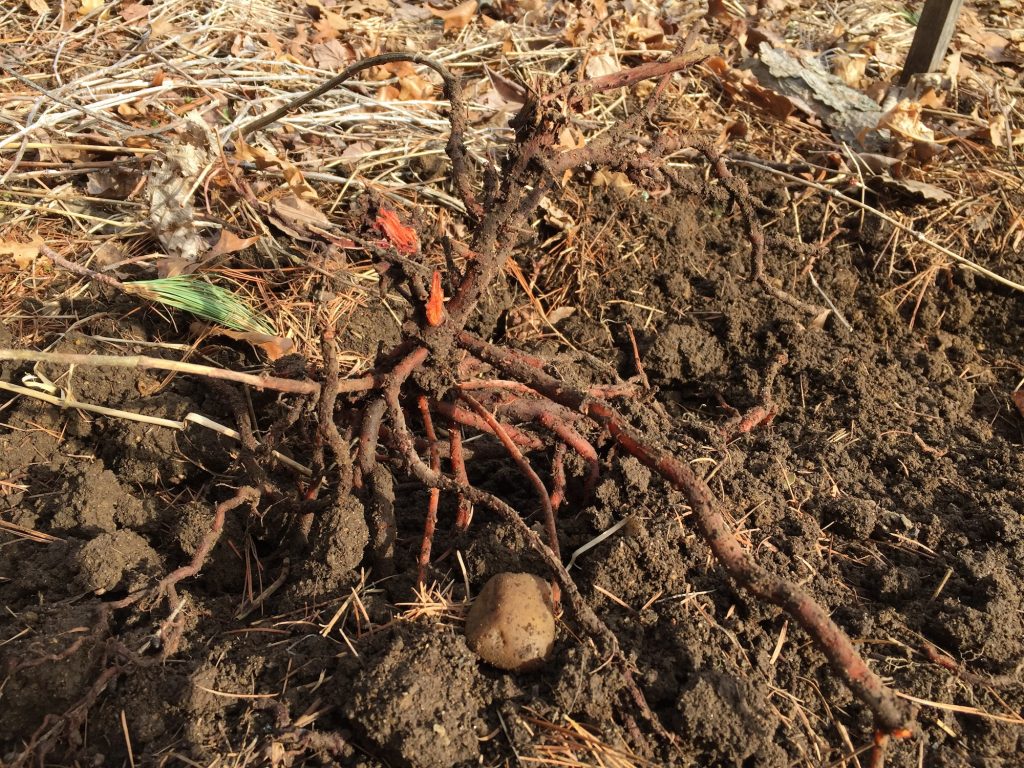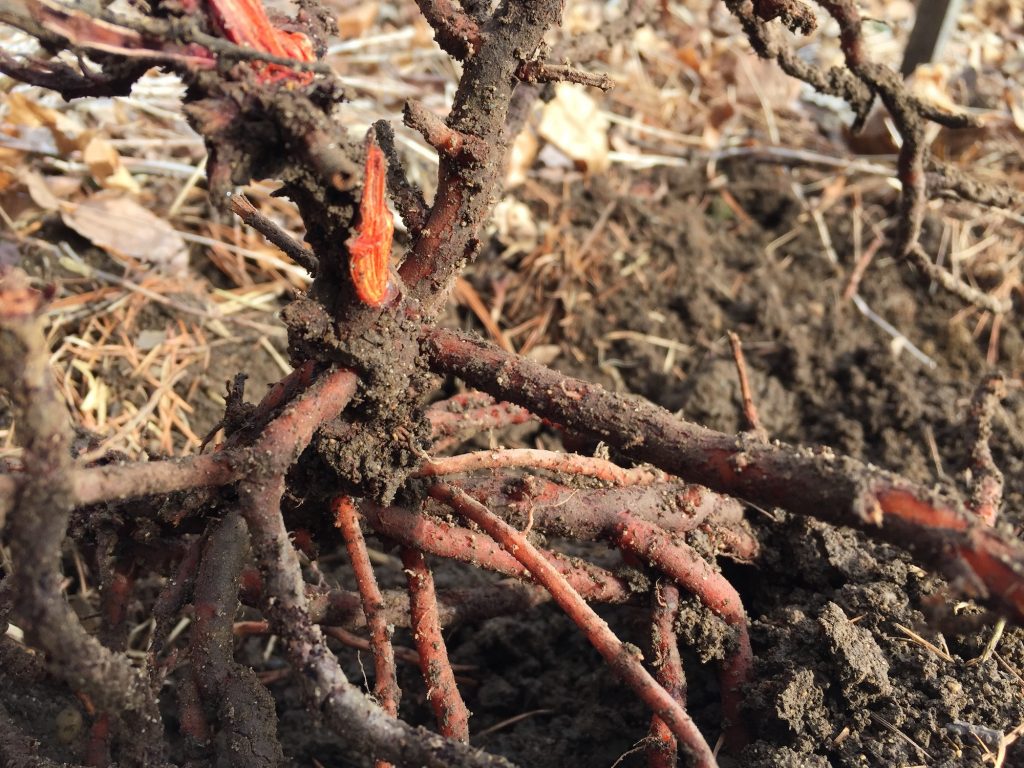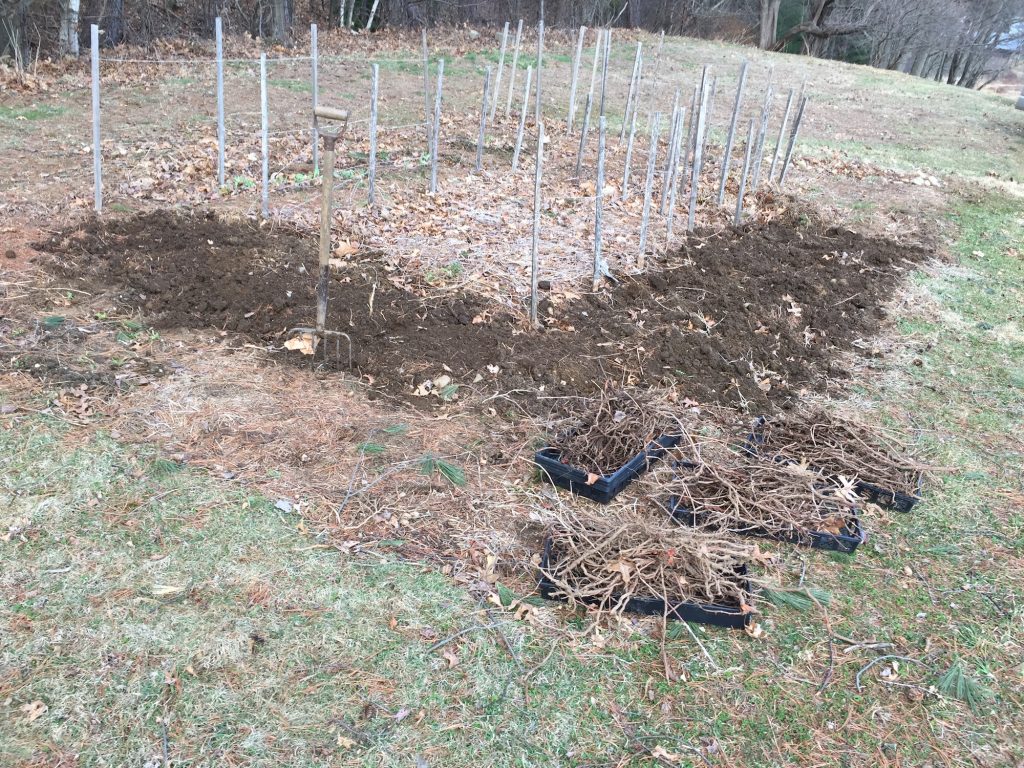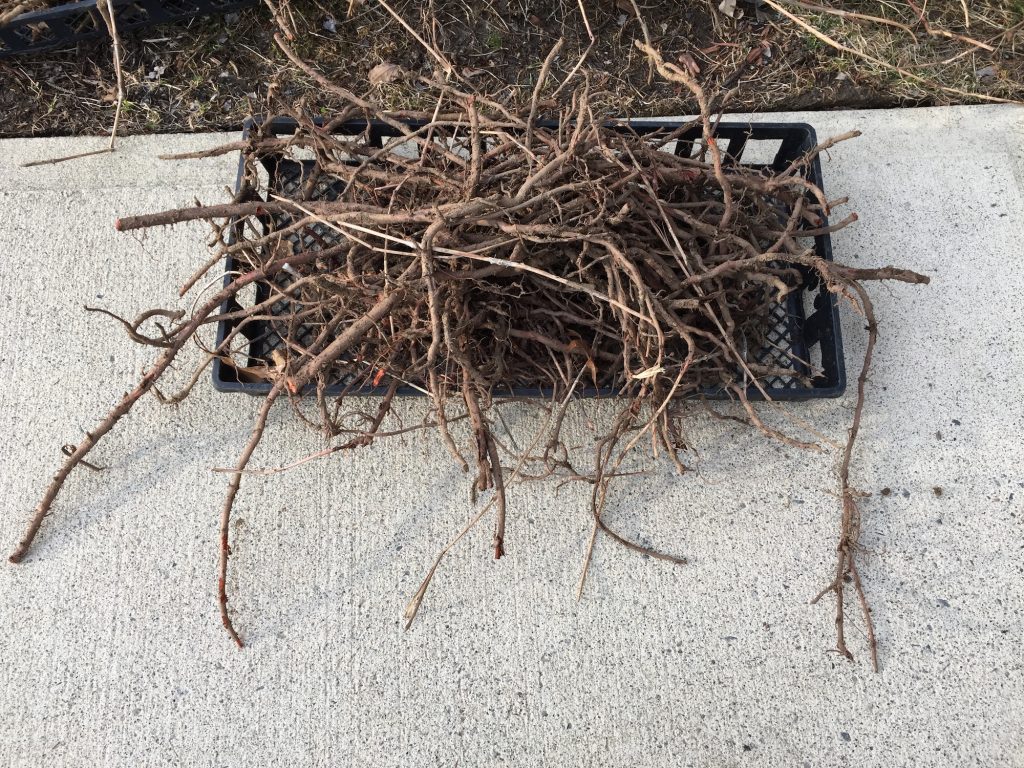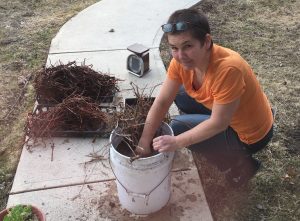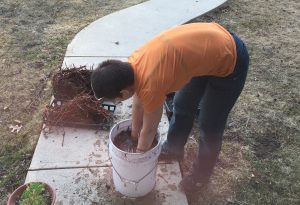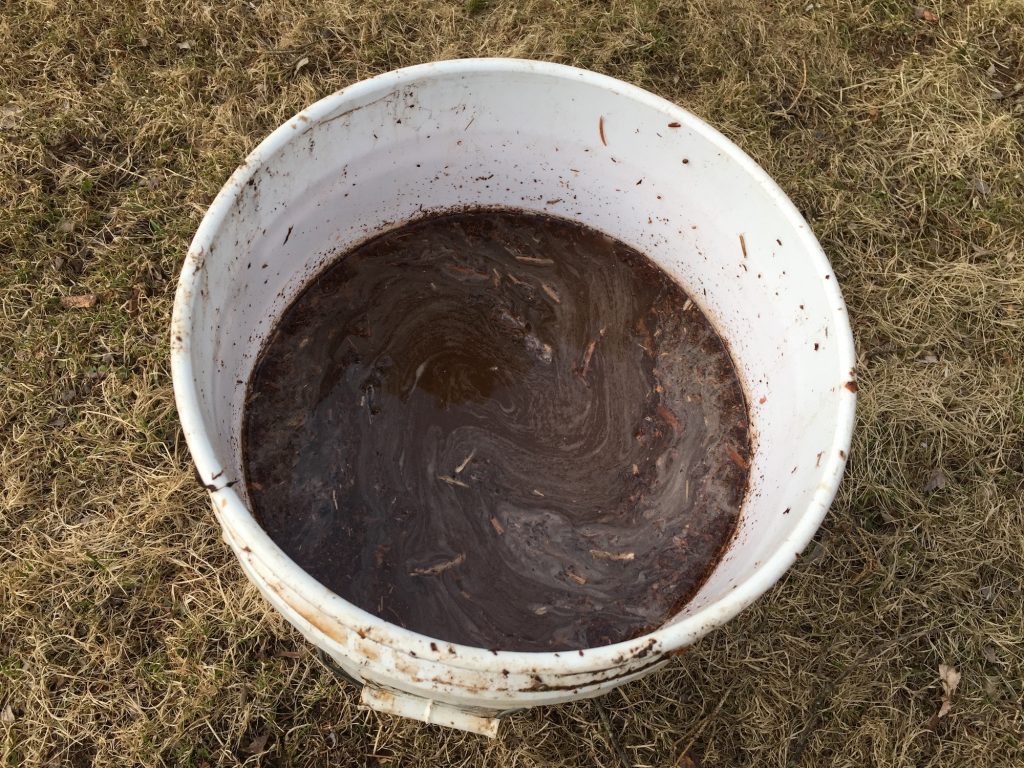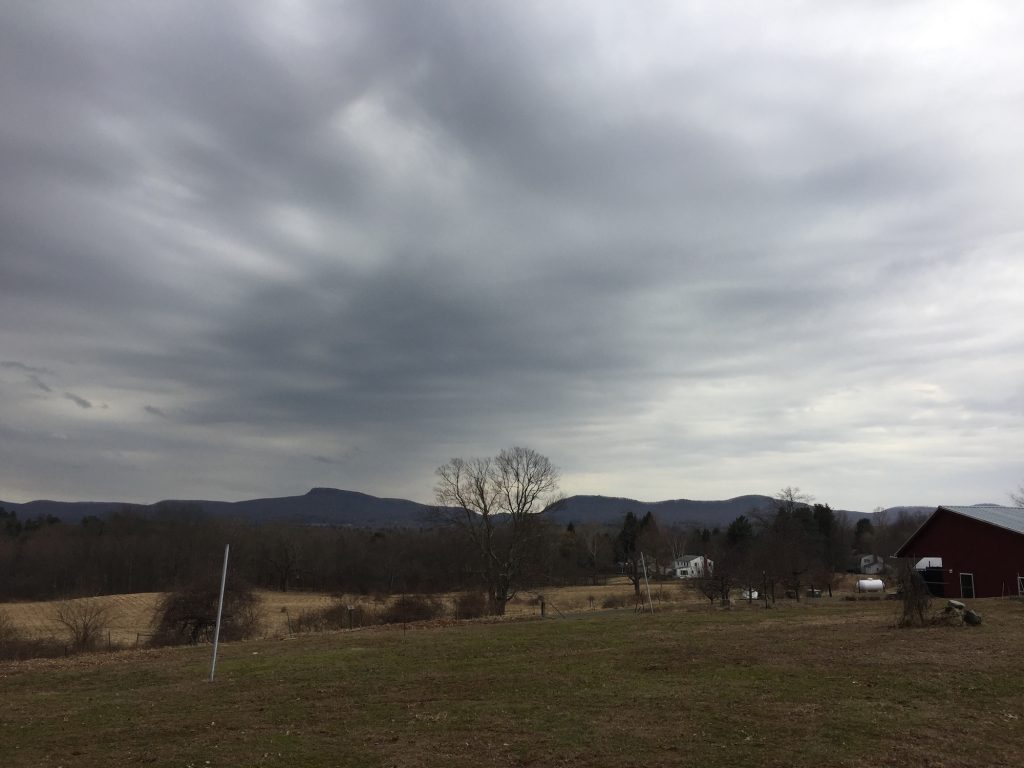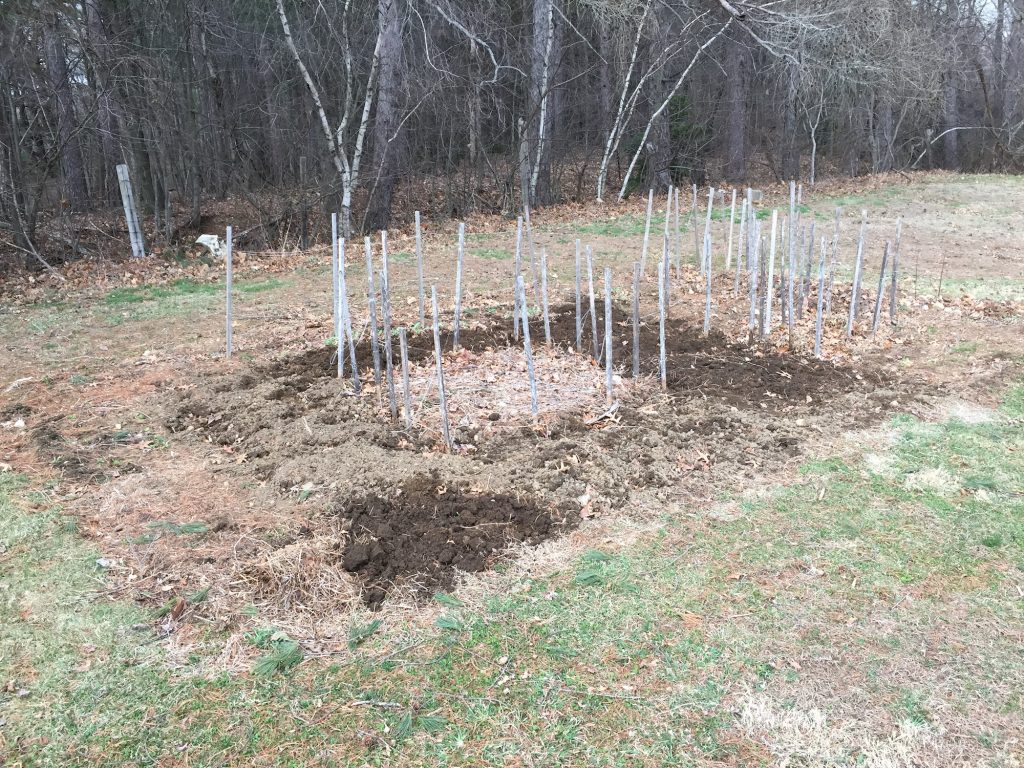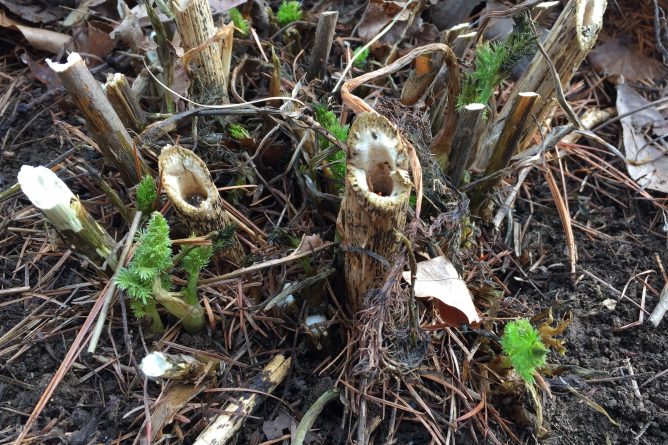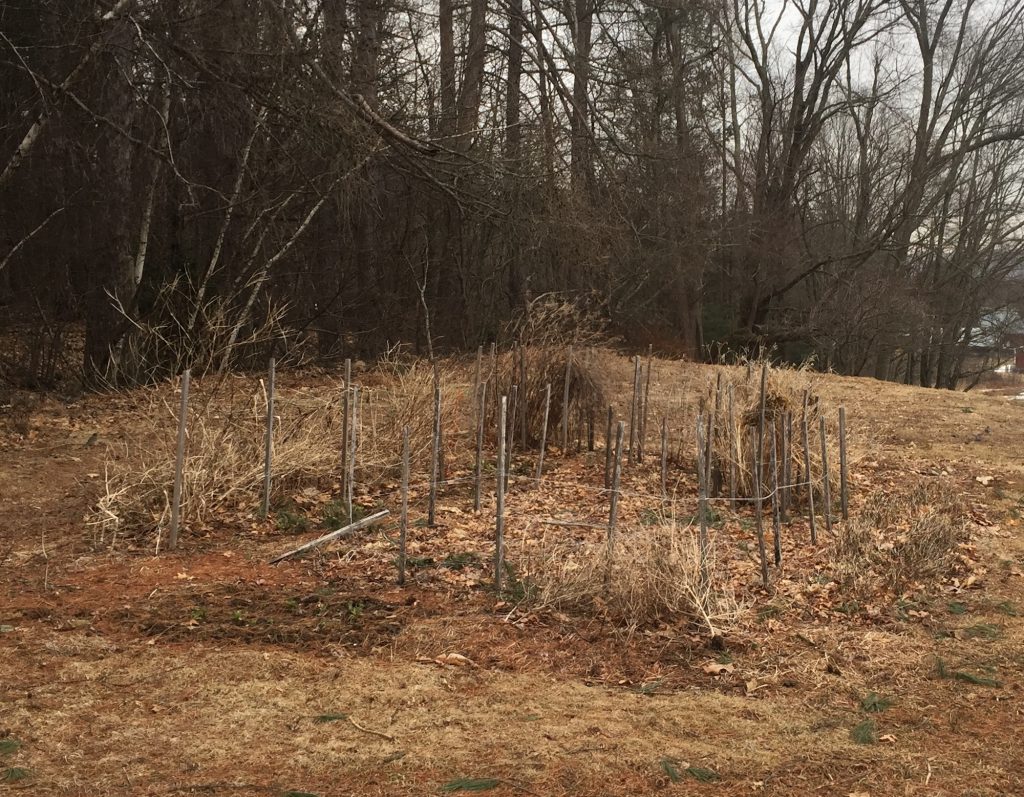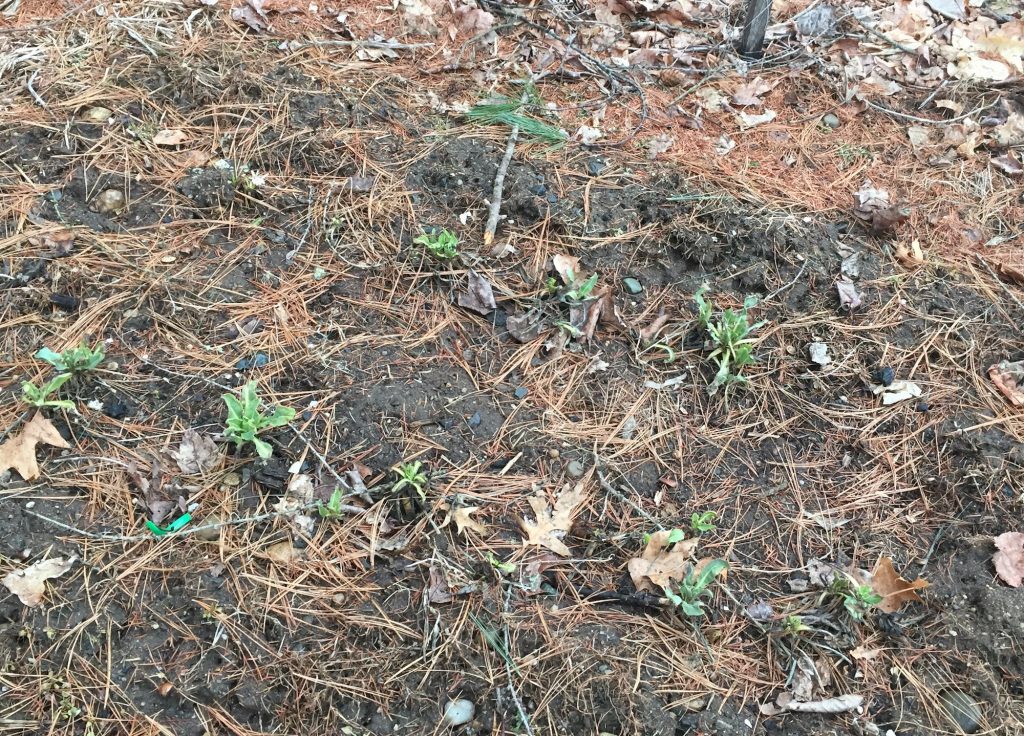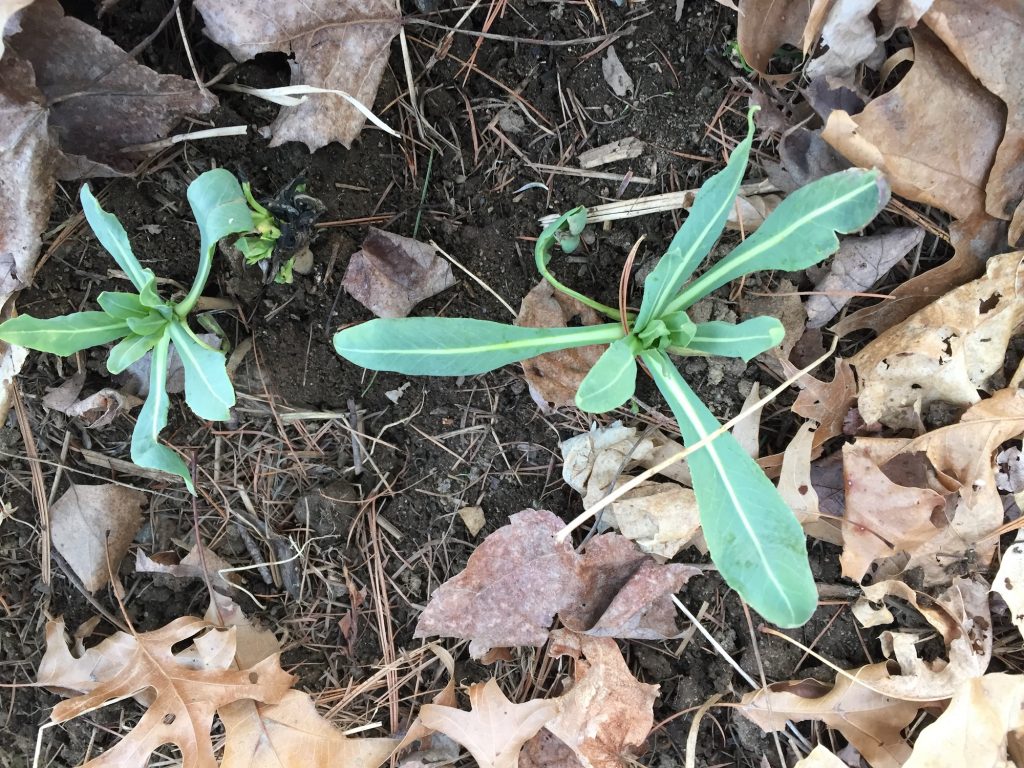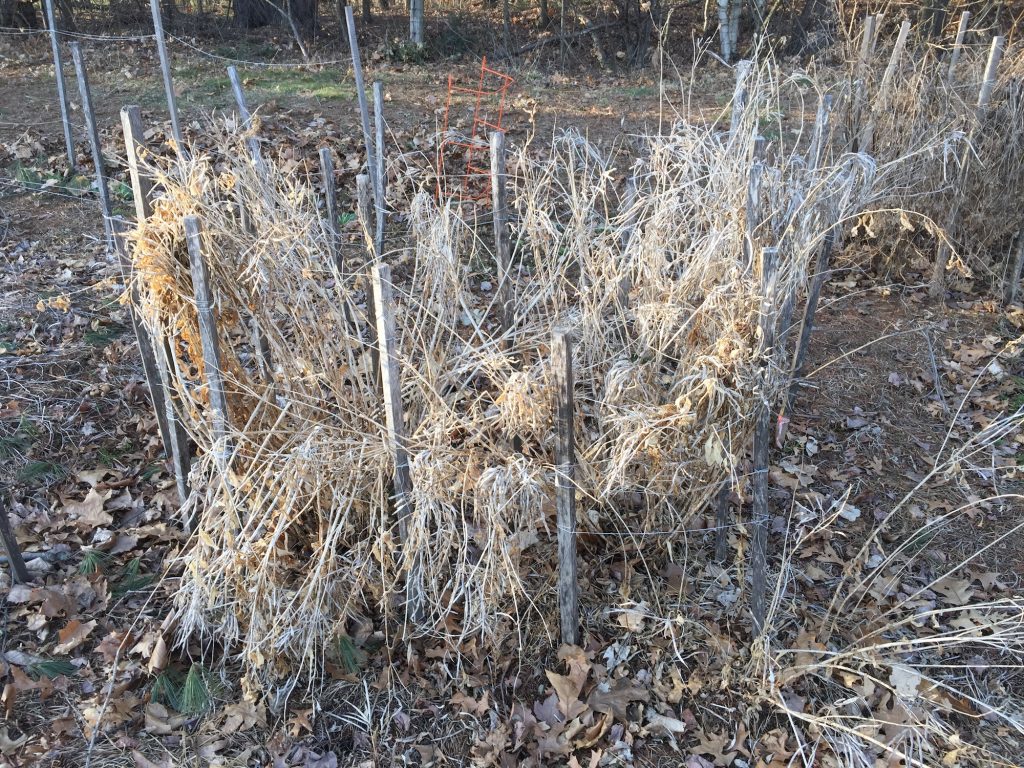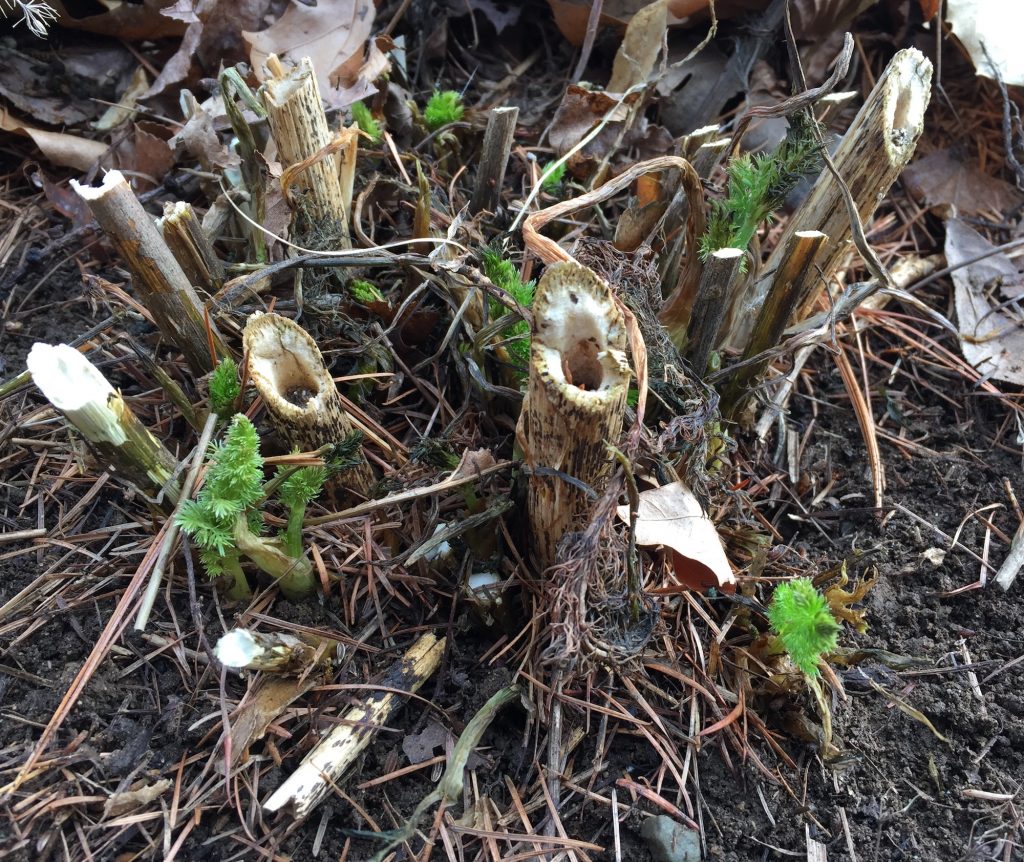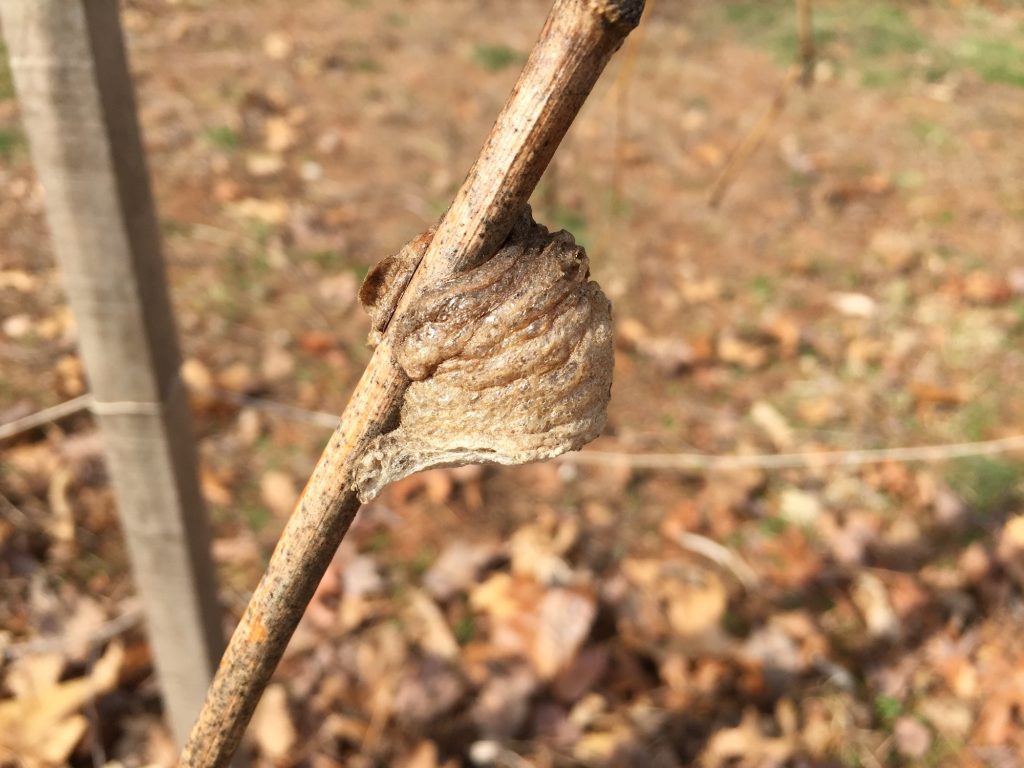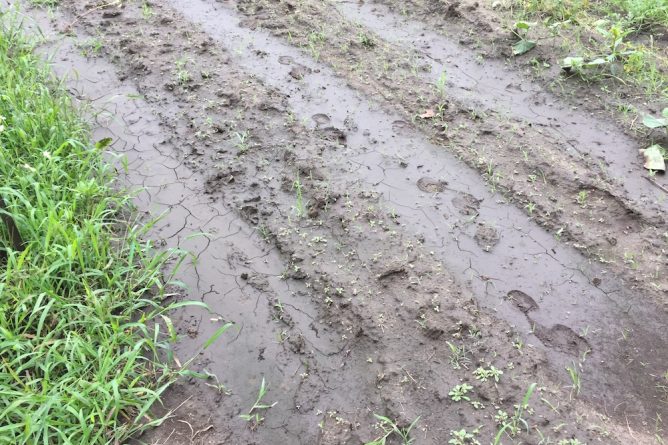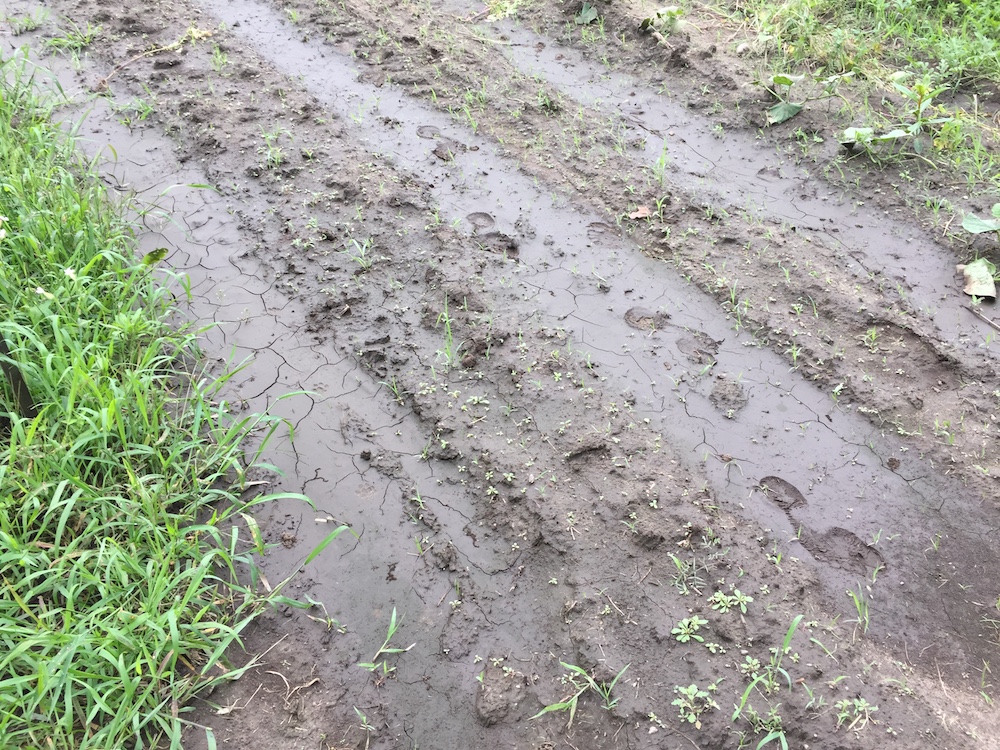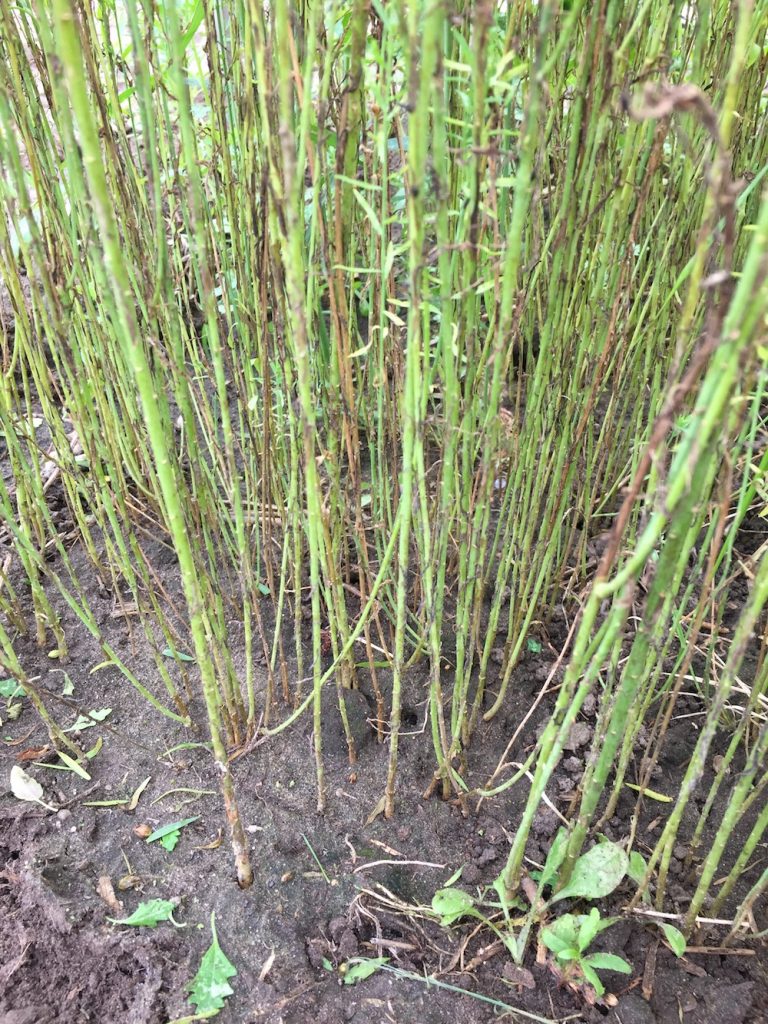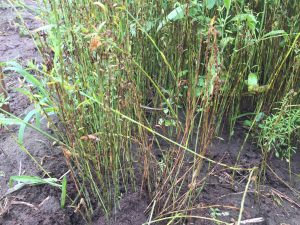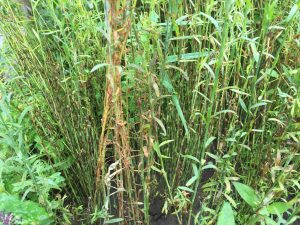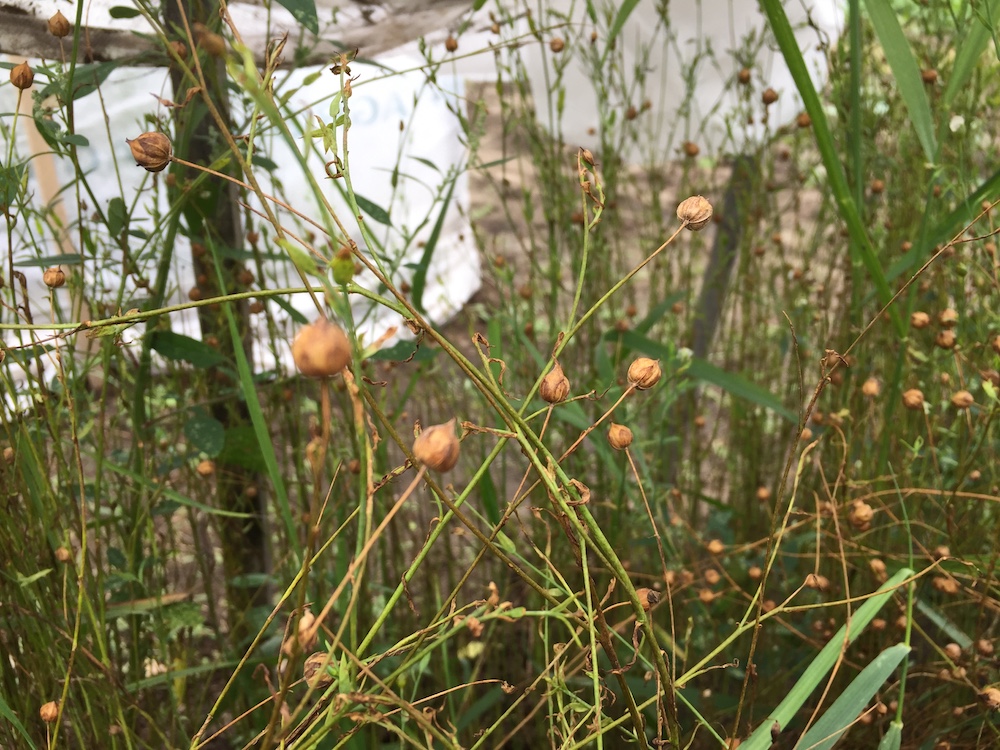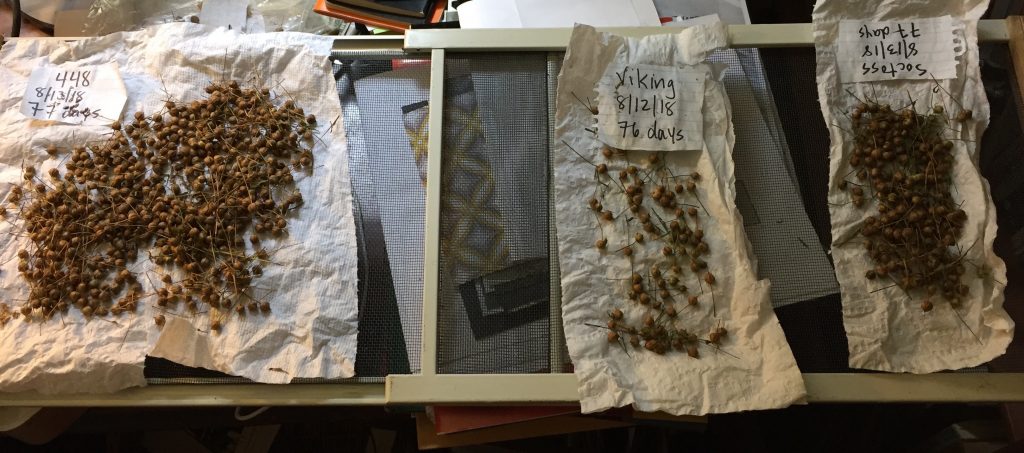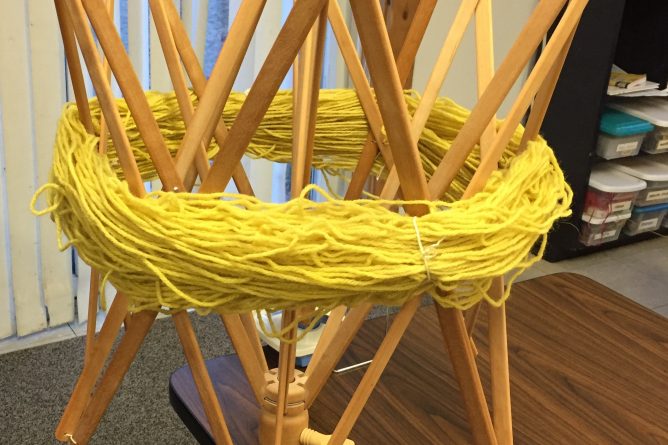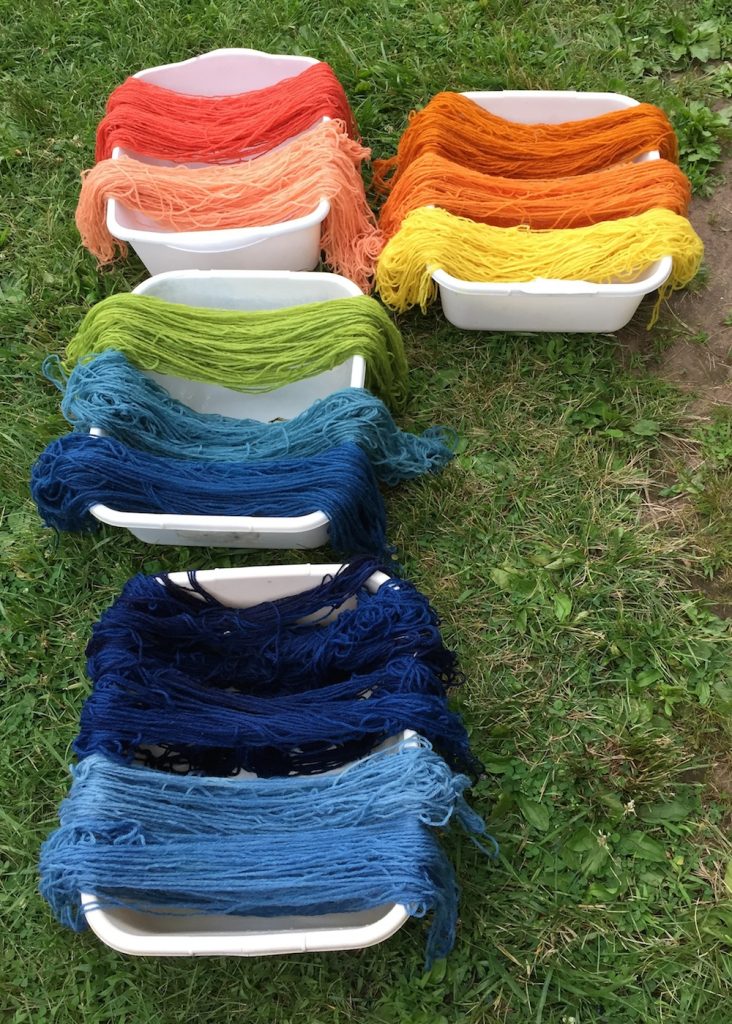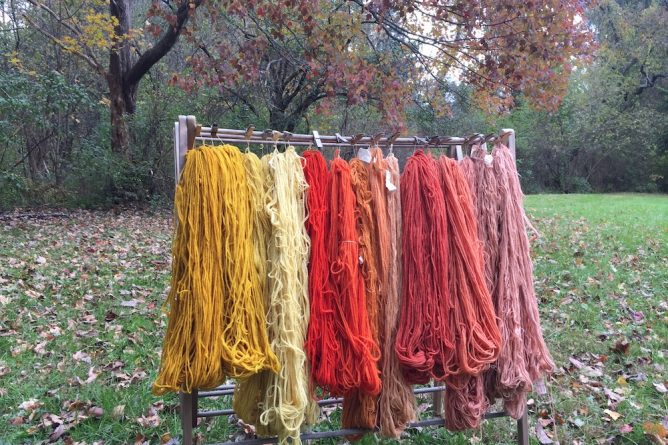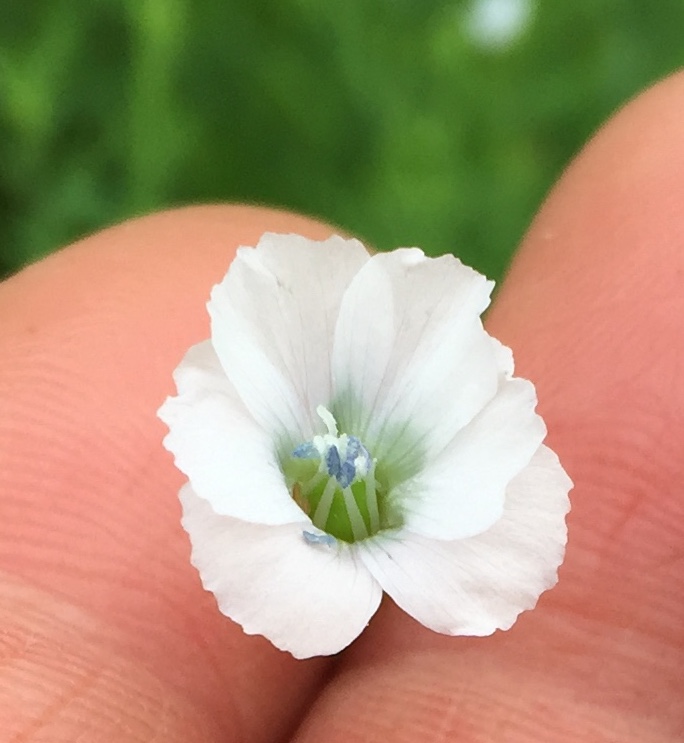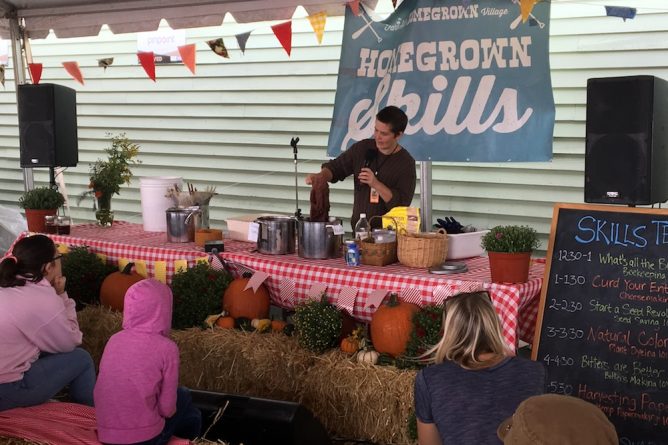On Friday April 19th I planted flax. This year I’m growing a type called Suzanne, courtesy of Jeff Silberman at Fashion Institute of Technology’s Textile Development and Marketing department. Once again, I am very grateful to Bernard at Amethyst Farm and Ryan at Many Hands Farm Corps for giving me space to pursue my flax endeavors. I put in seven pounds of seed. (12/31/2023 Edited: Many Hands is no longer in operation, but here’s a link to an old version of their website from 2019).
This year my plot is right in the heart of the Many Hands CSA pick-your-own field and share pick-up barn. Here are the signs as you pull in to that part of the farm:
Ryan kindly tilled the strip for my plot on April 17th. Here’s what it looked like on Friday afternoon:
The plot is 5 feet wide by 140 feet long. Each of the vertical stakes along the right hand edge measures 20 feet in length. To help me plant evenly, I divided the seed into two pound bags. Here’s what two pounds of flax seed looks like:
After a series of mailing mishaps, I was eager, happy, and grateful to greet the postal person carrying the box of flax seed to the door of my apartment around 3pm on Friday. I zoomed over to the plot to plant as quickly as I could that afternoon.
In retrospect, maybe I shouldn’t have felt like I was in such a rush, but I had my reasons. First of all, it was April vacation week and I was hoping to get the flax in before the week was up. Second of all, I had regrets about planting so late last year. If I had planted in mid-April when I should have, all that heavy rain and mold nonsense in late July and August last summer wouldn’t have been a problem. So, I really wanted to get it planted by the middle of April this year. Third of all, it was supposed to rain for many days starting on Friday evening, and I figured I had a small window to get the seed in before all the wet weather rolled in.
So, I weighed out the seed in two pound bags ahead of time, but the rest of the measurements took place at the site. Fortunately, 5 feet wide by 20 feet long makes for easy calculations.
I planted one pound of seed per 100 square feet, or two pounds per 200 square feet. Using a hand-broadcast method, I spread two pounds at a time across forty feet. For the last twenty feet, I divided the last two pound bag in half. Then I raked the seed in with a hard-headed rake.
The cover crop that Ryan put in for the winter was peas, oats, and radishes (if I recall correctly). It left a very nice straw, which significantly cuts down on erosion. After I raked the seed in, I pressed down the seed bed with a combination of methods. I started with a wooden board, which I stepped on to press down the soil.
This has been my tried and true method for smaller plots, but for 140 feet it was tedious. Ryan offered me a roller, which was more efficient, for sure:
The roller wasn’t very heavy, though, so I went over the whole thing with repeated passes of the roller, the board, and my own vigorous foot stomping. Here’s the finished seed bed, all planted and smooth:
Here’s a close up:
The raking removed quite a bit of the cover crop straw, which I regretted when we got hours of pouring rain on Friday night and Saturday. We had intermittent showers on Sunday, too. However, the bed is in the middle of a very smooth and flat field. When I checked this evening (Sunday) I didn’t see any rivulets of run-off or other soil disturbance from the heavy rain.
The weather is supposed to be warm (50s to 70s F.) and lightly rainy for the next few days. Finger crossed for a good crop this year!

